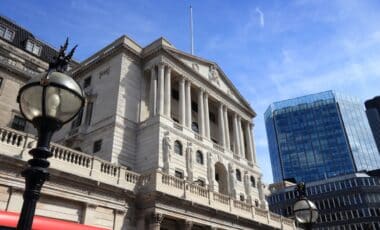The economic relationship between the United Kingdom and the United States is facing renewed tension as Washington imposes new tariffs on British imports.
The decision, announced by US President Donald Trump, marks a significant development in the wider context of global trade disputes and protectionist policy shifts.
With nearly £60 billion in UK exports to the US at stake, the move has prompted concern across multiple industries and government circles.
The new 10% levy introduces fresh uncertainty into a post-Brexit trade environment already marked by inflationary pressures, fluctuating interest rates and fragile supply chains.
Trade Dispute Puts UK Exports in the Crossfire
US President Donald Trump has imposed a new 10% tariff on all UK goods entering the United States, a move he described as retaliation for British levies on American imports.
The measure, which takes effect on 5 April, marks the latest escalation in the international trade dispute that has already unsettled markets and strained economic relations between close allies.
The UK, which exported nearly £60 billion worth of goods to the US in 2024, faces potential economic disruption as exporters, manufacturers and consumers come to terms with the new trade environment.
The fallout is expected to ripple through multiple sectors, from automotive and pharmaceuticals to retail and finance.
UK Businesses and Workers Face Mounting Pressure
The immediate impact is likely to be felt by UK-based firms that rely heavily on exports to the United States. According to the Institute for Public Policy Research, manufacturers such as Jaguar Land Rover and the Mini plant in Cowley, Oxford, are among the most exposed.
One in eight UK-produced vehicles is currently shipped to the US, and analysts warn that up to 25,000 jobs in car manufacturing could be at risk due to a separate 25% tariff on vehicles.
The pharmaceutical sector is similarly vulnerable. Oxford Economics highlights that the US accounts for 40% of AstraZeneca’s sales and 50% of GSK’s.
Although both firms operate facilities in the US, critical raw materials and active ingredients routinely cross borders during the manufacturing process, potentially attracting multiple layers of tariffs and increasing production costs.
Fishing, electronics and machinery industries are also likely to be affected, as rising costs could erode competitiveness and limit profit margins. In the longer term, businesses may need to seek alternative export markets, renegotiate supply chains or absorb financial losses.
Tariffs Trigger Currency Swings and Inflation Concerns
Fluctuations in the sterling-dollar exchange rate following the tariff announcement have added further instability to the economic outlook.
A stronger dollar would raise the cost of importing raw materials for UK companies, potentially leading to higher prices for British consumers.
According to Clarissa Hahn of Oxford Economics, this could result in price pressures that feed through to “inflation”. In a related development, the Bank of England recently held off on further interest rate cuts, citing heightened trade-related uncertainty.
UK rates currently stand at 4.5%, and while two reductions were previously forecast for 2025, policymakers are now cautious. Governor Andrew Bailey noted that the Bank will “look very closely” at inflation data in the coming months, suggesting that sustained price rises could delay any monetary easing.
Consumer prices could also be affected by global trade rerouting. As Swati Dhingra of the Bank of England’s Monetary Policy Committee explained, exporters deterred by US tariffs may divert goods to lower-tariff destinations like the UK, which could briefly lower prices.









